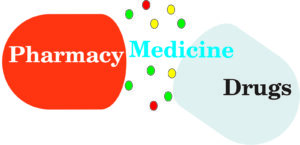Symptoms of Asthma | What Are Symptoms Of Asthma
Asthma affects the airways, causing them to tighten, become inflamed or to fill with mucus. Asthma symptoms can range from mild to severe. Most people will only experience occasional symptoms, although a few people will have problems most of the
time and include:
-
-
- Coughing, especially at night, during exercise or when laughing.
- Shortness of breath.
- Chest tightness.
- Wheezing (a whistling or squeaky sound in chest when breathe, especially while exhaling).
- Any asthma symptom is serious and can become deadly if left untreated.
- Symptoms may be triggered by exposure to an allergen (such as ragweed, pollen and pet hair or dust mites), irritants in the air (such as smoke, chemical fumes or strong odours) or extreme weather conditions.
-
Pathophysiology of Asthma | What Is Asthma?
The various common allergens are pollens, dust, mites, some food material and certain drugs which precipitate the asthmatic attack. The allergens upon exposure stimulate production of IgE which further bind to mast cells. Upon re-exposure to same allergen, the said allergens readily bind to IgE and result in degranulation of mast cell to release certain inflammatory mediators such as histamine, leukotriens, prostaglandins etc.
In a response to above changes, WBC’s migrate into the area to engulf the allergens.
The phagocyic reaction causes release of basic proteins which are lytic agents for
tissue and further promote inflammation. With exposure to a trigger, a cascade of
cellular responses cause:
- Increased production of thick tenacious mucus with impaired mucocilary
function. - Mucosal swelling due to increased vascular permeability and vascular congestion.
- Bronchial smooth muscle contraction
- These changes cause bronchial hyper responsiveness and obstruction. Airway obstruction increases resistance to air flow and decreases flow rates, including expiratory flow. Impaired expiration causes hyperinflation distal to the obstruction and increases the work of breathing. These changes are not uniform throughout the lungs but regional. Continued air trapping causes increased intrapleural and alveolar gas pressures resulting in decreased perfusion of the alveoli, the result is hypoxia.
- Late Asthma Response occurs in cases of significant allergen exposure. The symptoms can recur 4 to 12 hours after the initial attack due to persistent cellular activation. It can be more severe than the initial attack.
- Untreated inflammation can cause long term airway damage that is irreversible (airway remodelling).

